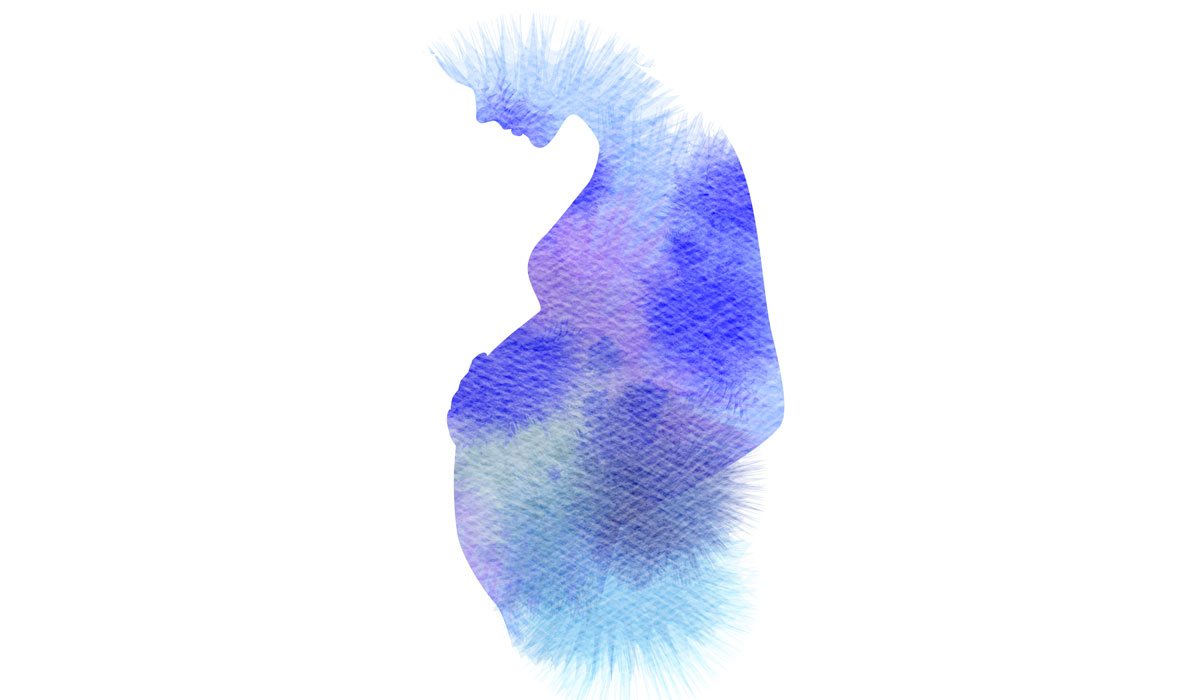It is becoming increasingly clear that we are in the midst of a mental health crisis. But what might be less commonly known is that we are also in the midst of a maternal health crisis.
Over the past several decades, the maternal mortality rate has been steadily rising, with over 20.1 deaths per 100,000 live births compared to Germany or Norway, which only see 3.2 deaths per 100,000 live births. These rates vary significantly across demographics and between geographic regions, but overall the United States has the highest maternal mortality rate of any similarly developed nation. There is an alarmingly high rate of cesarean sections at over 30%, compared to the United Nations’ recommended rate of 10%.
The unnecessary dangers attributed to giving birth in the United States are uncommon in other modernized nations. This is an unfortunate reality relevant to prenatal care as well. Those with concerns may begin to question whether the standardized prenatal approaches are safe and trustworthy, and may explore alternative ways to prepare themselves for pregnancy.
Some say that psychedelic medicines, and the spiritual healing and empowerment they can cultivate, are a powerful way to do just that.
Before we continue, please be advised that this article is not suggesting it is safe to use psychedelics while pregnant. Here, we examine certain speculations about how psychedelics may help make conception, pregnancy, and childbirth safer in a country where women’s reproductive health has historically been a means of oppression, in addition to being prohibitively biased according to race and class.
Women’s Health and Psychedelics
The relationship between psychedelic medicine and women’s health has not yet been sufficiently studied, though discoveries about the therapeutic potential of these substances continue to emerge. Like the majority of scientific clinical trials, psychedelic research has predominantly involved white male participants. For this reason, the potential risks and benefits of psychedelic medicine on women’s health are unknown at this time. Luckily, this trend is beginning to show signs of improving, but there remain severe disparities in psychedelic research recruitment.
A 2001 study investigated the subjective differences of MDMA experiences between men and women. Women reported more psychoactive disturbances, more perceptual changes, and overall more intense psychedelic experiences. The authors hypothesized that women might have an “increased susceptibility” to drugs like MDMA that interact at the 5-HT receptors. If this is true, that susceptibility could theoretically apply to other classical psychedelics that impact the same receptors, like LSD, DMT, and mescaline.
Anecdotally, and among people who use psychedelics frequently, many have reported differences in experience, potency, and dosage, in relation to their menstrual cycles. However, no studies investigate the impacts of psychedelics on fertility or any possible interactions with birth control.
Hormones related to pregnancy like estrogen, estradiol, and progesterone all interact with the 5-HT2A receptors, the same receptors where psychedelic drugs are active. Estrogen has been shown to increase the density of the 5-HT2A receptors, especially in the areas that affect emotion, cognition, and mental state. Drugs that hinder the function of 5-HT2A receptors may help alleviate some of the symptoms of premenstrual syndrome by allowing serotonin levels to increase, which is associated with improvement of mood and sensory perceptions such as pain.
In theory, if psychedelics were used when a person has high estrogen levels, their trip could feel differently from when they had lower estrogen levels. Given all of the at-home hormone monitoring and DIY microdosing stories found online, some people take DIY self-experimentation seriously. But until there are studies to investigate the specific effects, we do not know how psychedelics and pregnancy-related hormones interact — or how psychedelics interact with hormone therapy or replacement medications.
Are Psychedelics Safe to Use When Pregnant?
Because of prohibitive drug policies that halted psychedelic drug development for a period of time following the War on Drugs, there is currently no clinical research on the impacts of psychedelic therapy during pregnancy. One early study from 1967 found that there was no additional deleterious effect caused when using LSD during pregnancy, and a 1970 study found that LSD use by either parent before conception did not show any signs of congenital disability. But, these studies are inconclusive and must be revisited.
What is certain, though, is that using psychedelics while pregnant is illegal due to the unknown impacts of these substances on development in-utero. However, it should be noted that psychedelics like mescaline and LSD are known to induce uterine contractions in animal studies.
For people who experience mental health conditions during pregnancy, psychedelics could one day be a treatment option if they are determined to be safe. Many psychiatric medications are harmful to use during pregnancy, including common mood stabilizers such as lithium. Once the research is expanded in the coming years, it could be possible that low-dose psychedelics are a less harmful alternative to anti-anxiety or depression medications.
But for now, there is no reason to assume they are safe to use during pregnancy, especially during the first trimester when the fetus is in the most critical developmental stages.
There is evidence of the use of psychedelic plants during pregnancy among indigenous cultures, however. Ayahuasca, for example, can help support lactation and is used occasionally during pregnancy or in childbirth by indigenous people in South America. LSD is derived from ergot, a psychoactive fungus traditionally used by midwives to help progress stalled labor. Interestingly, Texas is the only state that directly prohibits the use of ergot in midwifery.
Psychedelics and Midwifery
The birthing experience is different for everyone involved, but women, midwives, and doulas were the caretakers of childbirth for most of human history. Birth rites, rituals, and traditional practices were cultivated across cultures for millennia — until male surgeons began dominating the profession.
As childbirth began shifting from midwifery practice to surgical practice in the 19th and 20th centuries, births were moved from homes and into hospitals where mothers’ spiritual and mental health were not generally taken into consideration. By the 1950s, nearly 99% of U.S. births occurred in hospitals, where mothers were less likely to have the kind of emotional support offered by doulas, midwives, or family members.
The troubling history of gynecology has left an impact on U.S. society and culture, and mothers are still working to restore access to personalized, culturally relevant, and integrative birth care. By the early 20th century, mothers were routinely strapped to beds and narcotized for days while giving birth.
This was called “twilight sleep,” a common procedure wherein high doses of scopolamine and morphine were administered to women to the extent that they would not remember childbirth at all. Though twilight sleep was eventually phased out, pregnant people were — and are — drugged, treated miserably, and subjected to experimentation as patients rather than with dignity as people.
Psychedelic drugs, often called entheogens when used in spiritual contexts, have been a part of this effort to rewrite the modern birth story for many.
Psychedelic Birth Stories from Ina May Gaskin and The Farm
Many stories are told about the 1960s psychedelic counterculture and the Summer of Love in 1967 that preceded the Controlled Substances Act. One that is often forgotten is how psychedelics helped nurture the restoration of home birth in the United States. Historian Wendy Kline points to the city of Chicago among home birth and maternal health advocates in the 1950s. Home birth never truly disappeared but was often the only option for poor and marginalized mothers, who often had safer births than mothers in hospitals.
By the time Ina May Gaskin arrived in Tennessee in 1970 with her partner Steven Gaskin, a former professor at San Francisco State College, the pair had completed a tour of lectures at universities across the country — along with a caravan of 200 followers packed into several buses.
During the course of the trip, eleven babies were safely born on the road without any professional intervention. Under the guidance of Ina May and the support of neighboring Amish doctors in Tennessee, home birth was “rediscovered” among women who were raised to fear a natural process. Instead of fear, many were reporting ecstatic childbirths and even orgasm during the birth process.
Psychedelics helped them prepare to give birth. Familiar with the fear of intense and overwhelming rushes of inescapable energies, this new generation of birthing women drew from their psychedelic experiences and began realizing that they had more control over birth pains than they were led to believe. After several thousand successful births on The Farm, with less than 2% ever requiring emergency cesarean sections, Gaskin published Spiritual Midwifery in 1976. The book details the stories and processes that weave together midwifery and the psychedelic-inspired spirituality of the time.
Entheogenic Midwifery and the Restoration of Birth Wisdom
Perhaps one of the most significant obstacles that psychedelics can help pregnant people overcome is any disconnection from their own intuition, wisdom, and sense of empowerment. Doulas are specifically trained to help support mothers during pregnancy and birth. And according to some, the support they offer might also translate to the intense energies experienced during high-dose psychedelic rebirths.
Receiving the name from a revered mentor and expert in the psychedelic community, Kilinid Iyi of Detroit, Omolewa is an experienced doula known widely as The Entheogenic Midwife. Entheogenic midwifery speaks to the process of rebirth, restoration, and resurrection of self, not only through pregnancy but through psychedelic experiences.
For Omolewa, the birth experience, and even the experience of menstruation, offer windows into the sacred realms of transformation made possible through embodied awareness and empowerment practices. From this place of divine wisdom, the idea of pregnancy having a prescribed pattern begins to shift and open up to new possibilities. For example, instead of a due date, she teaches about a birth month to help encourage women to look past any fears that they might not be functioning properly or “on time.”
In Entheogenic Midwifery, one important teaching about psychedelics and birth comes down to the themes of surrender and control. In modern childbirth and arguably modern psychedelic therapy, a great deal of emphasis is placed on isolating and controlling the mental aspects of the experience. But in discussion with the author, Omolewa offered instead that we “let birth and psychedelics do exactly what they were created to do, which is change us forever.”
Omolewa also reminds us that psychedelics are not just about ego death but about rebirthing oneself and their inner child at the same time. Similarly, childbirth is also a rebirth of self and identity as mother and nurturer. It is also a rebirth of one’s own inner child as the self returns to the realm of childhood experience and curiosity.
From this grounded and embodied approach to psychedelics, mothers can draw upon transformative states to nurture a sense of empowerment that can sustain them throughout childbirth.
Psychedelic Therapy and Pregnancy Stress
On the other side of end-of-life anxiety, fear of childbirth is an established mental health condition that can have dangerous complications, not only psychologically but also for the health and safety of the mother and child. Working through emotional fear before giving birth can help alleviate stress and fear, whereas suppressing fear and stress can make things worse.
Pregnancy is not only a physical experience but also a neurological and spiritual experience. As the mother’s body undergoes rapid changes and waves of hormonal fluctuations, a neurological and spiritual transformation also occurs in preparation for parenting a newborn. Just as psychedelics can help relieve end-of-life anxiety, so too might these experiences help alleviate the fear of giving birth — and postpartum depression that might arise after.
One of the risk factors for postpartum or natal depression is a history of anxiety, post-traumatic stress disorder (PTSD), and untreated trauma or mental health issues. Due to the intensely transformative outcomes of pregnancy and parenthood, there is something to be said for seeking out psychedelic therapy before conception to begin working through any potential fears or traumas related to childbirth or parenting. As acclaimed psychedelic researcher Stan Grof believed, this can include the trauma of our own births.
Psychedelics for Childbirth Support
Childbirth itself can appear scary for many, in part because of media portrayals of birth and the high rates of maternal mortality and emergency cesarean procedures used in the United States. For some, fear of childbirth or the pain of childbirth itself can create additional levels of anxiety, which may amplify the experience of pain and catalyze a psychological and physical feedback loop until emergency surgical intervention is called for.
Like psychedelics, a person’s birth experience has a lot to do with their mindset and the setting in which the birth is taking place. While it is well established that women experience gender bias in a hospital setting, those who also experience racial bias in a healthcare setting may feel that hospital birthing is a riskier alternative to a community-based birth model.
While the maternal mortality rate is high at the national level, some mothers are at greater risk than others. Still, those who have supportive staff consistently have lower rates of maternal mortality. Doulas and midwives can go a long way in helping to reduce these rates, but supporting these roles requires shifts in healthcare administration, funding priorities, and state laws that limit women’s access to the safety provided by personal, holistic birth care.
The Future of Psychedelics and Pregnancy
Given the historical uses of psychedelics in childbirth, and the nature of psychedelic healing as we know it, it is possible that psychedelics could help support people approaching pregnancy or through integrating traumatic birth experiences — someday. But so too can parental leave, childcare support, and culturally informed policies that prioritize maternal mortality outcomes.
As a field of research, there are incredible opportunities yet to come at the intersection of women’s health, midwifery, psychedelic therapy, and even drug development. But in the meantime, providers might consider supporting community birth and mental health models developed by those most impacted in these current health crises. Though psychedelics may one day be a great resource in women’s health, there is no reason to wait to address the lack of diversity recruitment in psychedelic and women’s health research now.









